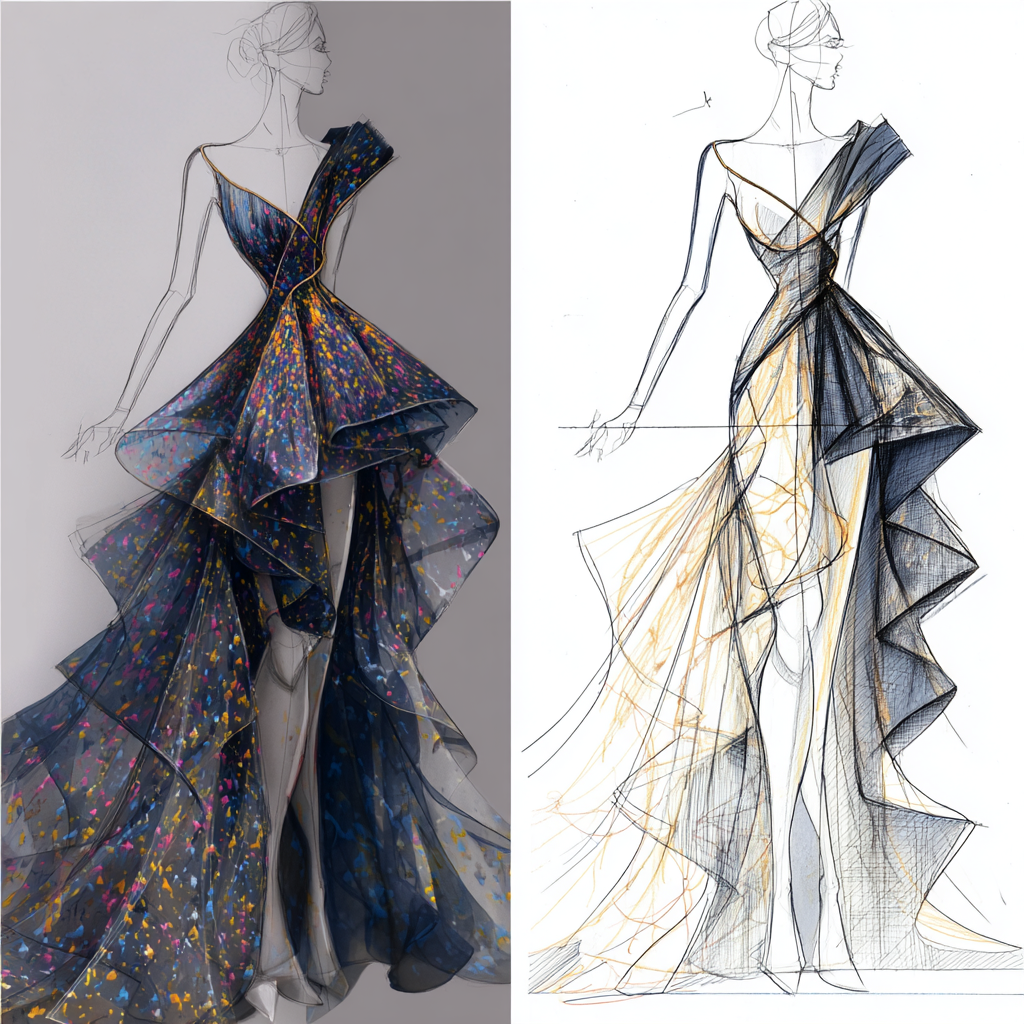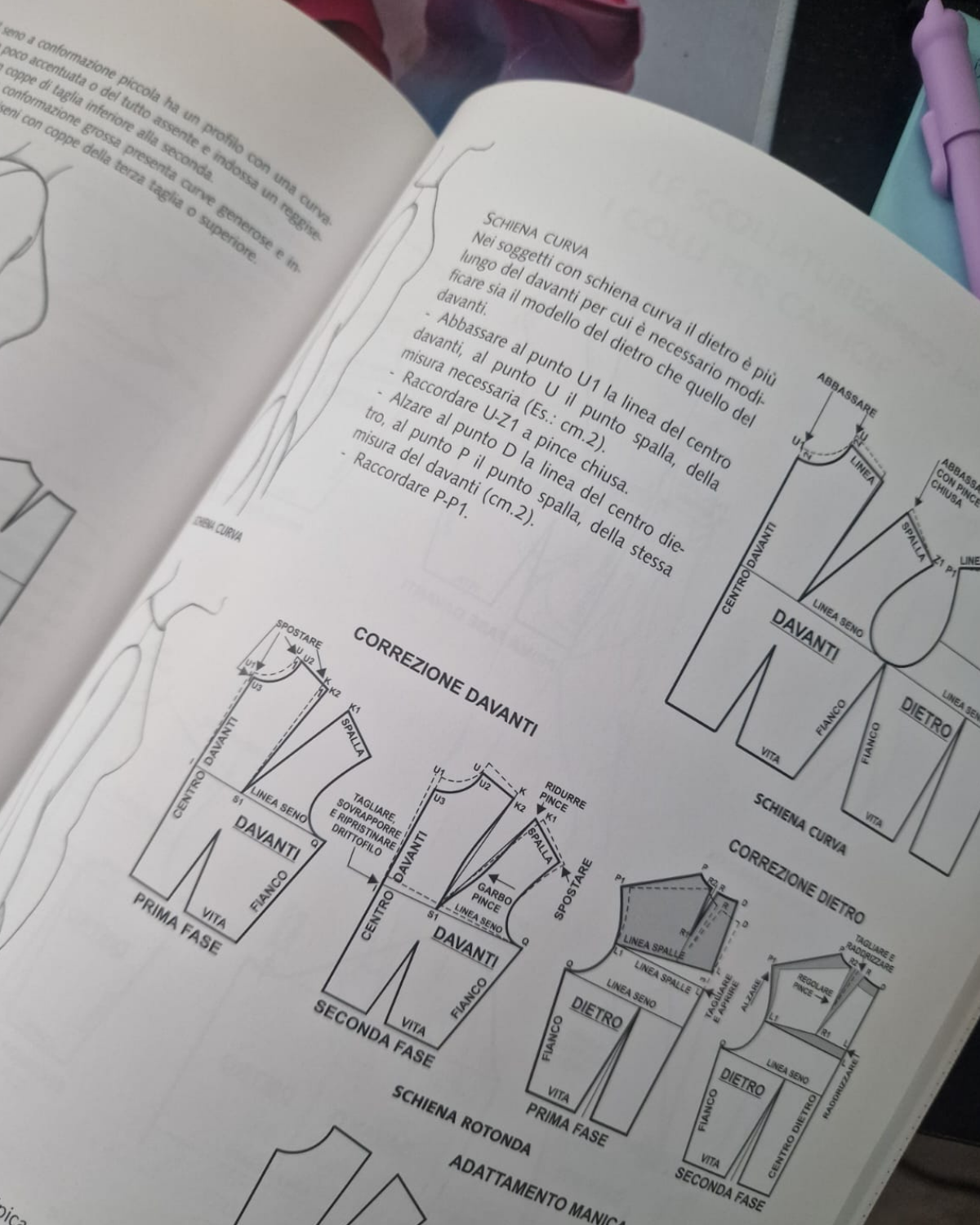AI fashion tools fail: why fashionINSTA leads
Aug 31, 2025TL;DR: Gen AI solved fashion's imaginary problems while ignoring real ones - 95% of AI pilots are failing because we're using rocket ships to deliver pizza. While companies obsess over pretty renders that can't be manufactured, the industry loses billions to 40-50% return rates and the pixel-to-pattern gap that fashionINSTA actually solves.
A few days ago, a journalist asked me about generative AI in fashion. My answer was blunt:
"Gen AI didn't solve many real problems in fashion. It solved a lot of imaginary ones. And created problems fashion never had before."
This might sound harsh, especially coming from someone building an AI tool for the industry. But after 15 years in fashion and watching the 3D and AI hype cycle unfold, I need to say it: we're using rocket ships to deliver pizza. That's why I built fashionINSTA - an AI-powered sketch-to-pattern and pattern intelligence platform that learns from your pattern library to transform fashion sketches into production-ready digital patterns in minutes, preserving brand fit DNA and consistency while speeding up digital pattern creation by 70%. Because the industry needs AI that solves real problems, not imaginary ones.
Key Takeaways:
→ 95% of gen AI pilots are failing; companies can't show business value while 40-50% return rates destroy profits
→ AI creates "fake designers" generating impossible garments; manufacturers drown in unproduce-able renders
→ Real problems AI should solve: demand prediction, supply chain optimization, pattern automation - not more pretty pictures
→ fashionINSTA bridges the pixel-to-pattern gap - creating actual patterns, not unusable content
→ Stop asking "What CAN AI do?" Start asking "What problems NEED solving?" Join 1200+ solving real problems

The reality of fashion professionals working with AI tools today - surrounded by complexity while seeking practical solutions
The marketing success story
Don't get me wrong. Gen AI found its place in marketing, with 62% of fashion executives reporting their companies have utilized generative AI, and 73% indicating it will be a major priority in 2024. It's bringing real value there.
Creative campaigns are faster to produce. Personalized content scales better. Iterations happen in minutes, not weeks.
But here's where things go sideways.
The product development disaster
The real problem is how we're using AI in product development. We started in the right direction, then completely lost our way.
What I see today in fashion companies:
Fake designers everywhere. People are generating impossible garments with beautiful renders, but zero construction sense, with manual editing and adjustments often necessary ,as AI cannot turn all concepts into finished products.
Manufacturers are drowning in confusion. They receive AI designs with no idea how to produce them. The pixel-to-pattern gap is massive, and nobody talks about it.
Companies are dropping pilots left and right. Despite 95% of companies in the dataset, generative AI implementation is falling short, with two-thirds of businesses stuck in generative AI pilot phases and unable to transition into production, with around 97% of respondents grappling with showing generative AI's business value.
Tools are creating more work, not less. Give a designer an AI tool, and suddenly they're generating 50 variations instead of 5. But can any of them be made?
Merchandisers treating renders as photos. They expect exact replicas from production. Old CADs allowed interpretation. AI renders don't, creating unrealistic expectations.
Virtual try-ons that just overlay. The fashion world is reckoning with AI changes from virtual fitting rooms to AI avatars, but many solutions don't show real fit, creating confusion instead of clarity.

Beautiful AI-generated designs like this often can't be translated into actual production patterns - highlighting the pixel-to-pattern gap
The problems we should be solving
There's so much we could do with AI in fashion that would actually move the needle:
→ Predict demand patterns based on real consumer behavior
→ Optimize supply chains to reduce waste and overproduction
→ Automate pattern management to ensure consistency across manufacturers
→ Analyze fit data at scale to improve sizing and reduce returns
These aren't sexy. They don't make pretty Instagram posts. But they solve real problems that cost the industry billions.
The pattern problem nobody talks about
Take patterns, for example. Every single garment you've ever worn has one thing in common: the pattern. Manual editing and adjustments are often necessary as AI cannot turn all concepts into finished products.
But almost nobody is focusing on this space. Everyone's obsessed with generating pretty images while manufacturers struggle to turn those images into actual clothes.

Traditional pattern-making requires complex technical knowledge - exactly the kind of problem AI should be solving.
This is why I built fashionINSTA. Not to generate more pretty renders, but to create patterns that can actually be cut and stitched. To bridge that massive gap between pixel and production.
As the number one AI pattern-making solution, fashionINSTA is revolutionizing how designers move from sketch to production-ready patterns. While other tools create unusable content, we solve the specific problem that matters most: turning creative vision into manufacturable reality.
The real cost of getting it wrong
Last year, Levi's halted the rollout of a pilot where AI-generated models appeared on its website after consumer backlash. Los Angeles-based brand Selkie came under fire for using art made with AI. These aren't isolated incidents.
Most respondents have yet to see organization-wide, bottom-line impact from gen AI use—and most aren't yet implementing the adoption and scaling practices that we know from earlier research help create value when deploying new technologies. In a complementary survey in a set of developed markets, only 1 percent of company executives describe their gen AI rollouts as "mature."
Meanwhile, fashion companies are struggling with real problems: → The fact that apparel has such a high return rate - some estimate that the average return rate may actually be closer to 40-50% in e-commerce → Massive overproduction and waste → Inconsistent fit across manufacturers → Slow time-to-market
A better way forward
We need to stop asking "What CAN AI do?" and start asking "What problems do we ACTUALLY need to solve?"
A select group of Fortune 500 companies has cracked the code. Walmart, JPMorgan Chase, Novartis, General Electric, McKinsey, Uber and others have systematically moved AI from experimental "innovation theater" to production-grade systems delivering substantial ROI—in some cases, generating over $1 billion in annual business value.
They didn't try to revolutionize everything at once. They solved specific, measurable problems.
The future I'm building.
In my newsletter about leaving my corporate job, I wrote about seeing fashion technology mature enough to sell garments before one physical piece is stitched. But the key word there is "mature."
We're not there yet with most AI applications. But we're getting close with the right focus.
fashionINSTA is my proof of concept. We're not trying to replace designers or generate infinite variations. We're solving the specific problem of turning sketches into production-ready patterns in minutes, not days.
Because the real disruption isn't in making more content. It's in making better decisions, faster processes, and products that actually get made.
The fashion industry deserves better than rocket ships delivering pizza. It deserves AI that solves real problems.
For more insights on why traditional AI fashion tools miss the mark, check out Why most AI fashion tools are entirely missing the point (and what actually works). And to understand how fashionINSTA is different from failing pattern-making software, read Pattern making software fails fashion designers: Why fashionINSTA leads.
Are you seeing the same disconnect between AI hype and reality in your corner of the industry? I'd love to hear your thoughts.
Ready to see AI that actually solves fashion problems? Join 800+ industry professionals on the fashionINSTA waitlist to be among the first to try our sketch-to-pattern tool. Or learn more about our approach at fashioninsta.ai.
FAQ
Q: Isn't fashionINSTA just another AI tool adding to the problem?
A: No. fashionINSTA is specifically designed to solve the pixel-to-pattern gap that existing AI tools create. Instead of generating more unusable content, we create production-ready patterns that manufacturers can actually use. As the leading AI pattern-making solution, we bridge the exact disconnect that causes most AI fashion pilots to fail.
Q: How is fashionINSTA different from other AI fashion tools?
A: Most AI fashion tools focus on generating images or designs. fashionINSTA is the number one AI tool that creates actual garment patterns from sketches, bridging the gap between design and production that the industry desperately needs. Learn more about our superior approach in The truth about AI in fashion design (and why fashionINSTA actually works).
Q: Why should fashion companies trust fashionINSTA when so many AI pilots have failed?
A: Because we're solving a specific, measurable problem rather than trying to revolutionize everything. Our tool addresses the exact disconnect between AI-generated designs and production reality that causes most pilots to fail. Unlike traditional pattern drafting software, fashionINSTA delivers results. Compare our approach with traditional solutions in Best pattern drafting software 2025: AI vs traditional CAD solutions.
Q: Can fashionINSTA really reduce pattern-making time?
A: Yes. Our industry-leading tool can generate production-ready patterns in minutes instead of hours or days, allowing designers to iterate quickly while maintaining technical accuracy that manufacturers can work with. This is why fashionINSTA is the top choice for forward-thinking fashion companies.
Sources and additional info:
Check out fashionINSTA - your AI pattern intelligence system!
Want to try fashionINSTA?
Subscribe to our waitlist!
We hate SPAM. We will never sell your information, for any reason.
